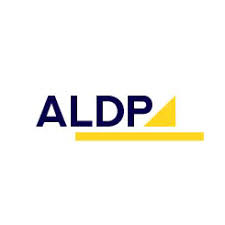The release of The Big Cleanup: How enforcing the Polluter Pay principle can unlock Alberta’s next great jobs boom on Tuesday 29 June by the Alberta Liabilities Disclosure Project is an important next step in the Province coming to terms with its oil and gas legacy. The easy-to-read 40-page report comes complete with nuggets of information to jar government and industry policy-makers along with a dozen recommendations to minimize the costs to Canadian and Albertan taxpayers.

Preliminary
There is little doubt that Albertans have enjoyed the fruits of the periodic capital investment booms of the energy industry since the 1950s. These fruits included low unemployment rates, highest incomes in Canada, generous government services, low taxes, and Canada’s highest “standard of living.” Standard of living indicators however are not the same as measures for economic wellness or happiness. Boomtimes also can be, and are, associated with increased drug use, prostitution, alcoholism, and the traffic carnage on Highway 31. The high wages and wealth accruing to the oil industry contributed to a buoyant service sector (law, accounting, engineering, communications) and the country’s highest per capita retail sales. Rising oil production created a unique swagger- an exceptionalism and belief that individualism, hard work created Alberta’s success. Yet, today we are learning that these rewards arose from obtaining lands through a process of colonization: without compensation, the vast reservoirs of the 20th century fuel feeding post-war, western capitalism firmly displaced the original stewards of the land.
century fuel feeding post-war, western capitalism firmly displaced the original stewards of the land.
The Conundrum
The conundrum is that Alberta’s economic system requires relentless growth by extraction industries to sustain Albertans’ standard of living. However, the high costs of this expansionary behaviour are coming home to roost.

Signs exist everywhere: summer smoke inhibiting our blue skies; absurdly high temperatures; finance capital’s gradual exit from funding new projects; growing consensus among government decision-makers that this economic system is on its last legs. So the known manner of making a living- extract and export raw commodities -is coming to an end.
Raw numbers
The authors of the report, Regan Boychuk, Mark Anielski, John Snow and Brad Stelfos reprise an earlier ALDP report which concluded that the cleanup costs for 300,000 unreclaimed wells averages about $55 billion or between $30 and $70 billion. This range contrasts against the Alberta Energy Regulator’s (AER) official number of $28 billion. The ALDP study does not include the cleanup costs of 400,000 of pipelines. As the study points out that is a miniscule amount- $200-million is set aside by the industry to deal with the massive problems.
The study’s underlying question is “will the conventional oil industry- the polluter- pay for the costs of reclaiming the land?” Through a number of court judgements the “polluter pay” principle has become well established. The trouble is evidence over the past decade showing that the industry and the AER has not abided by/enforced the legislation. According to the Report based upon the Regulator’s own financial analysis 49 per cent of operators licensed by the AER are insolvent. This does not mean that nearly one-half of the wells are operated by insolvent companies. The number is about 10 per cent (34,683 of 343,456) of licenses which is still as disturbing number (p. 24).

The authors then go on to describe how they formulate a calculation they call the oil or gas wells “best-before date” or the well’s “economic limit.” This occurs when the future cash flow of the well is insufficient to retire the reclamation obligations. At this time the reclamation bill, absence regulatory action, gets transferred to the taxpayers. The Report finds that four out of five – 80 per cent of wells that need to be retired in Alberta are past their economic limit. That is to say that that the wells cannot support the clean-up costs of roughly 240,000 wells. This does not mean that many of the well-financed operators do not have the capacity to shoulder the reclamation responsibilities. The real dilemma for governments is twofold- first what to do with the 80 per cent of the wells and, second, how to address the remaining 20 per cent of the financially capable well operators.
The magnitude of the financial hole is the difference between what has been captured by the government to provide for well reclamation. Against a liability of approximately $40 to $70 billion a paltry $0.2 billion is set aside by the industry. The unfunded liability, would be a minimum of $40 billion, the Report characterizes as a “future liability owed by the industry in exchange for their license” to explore and extract resources. What has happened however is that Canadians have “involuntarily become the oilpatch’s environmental creditors.”
A typical Alberta oil well
The Report includes a case study taken from Regan Boychuk’s childhood growing up in Rycroft where his grandfather hosted Oil Well #0776062502000. In 1986, Boychuk’s grandfather received $3500 a year from the operator. In 1992 the well was producing cash flow of about $32,300 in 2021 dollars. In 2000 an acid treatment was introduced to re-stimulate the well’s production. In 2012, the well hit its “best-before” date when the remaining oil revenue was only sufficient to cover reclamation costs. Between 1986 and 2016, the well produced 1.6 million barrels of oil worth over $61 million in today’s dollars. In 2016, the well fell idle and was sold to Rising Star Resources. In March 2020 the well was plugged. Today the well remains plugged sitting in a field where canola cannot be farmed. Without a proper cleanup, estimated to cost a quarter of a million dollars, the sale of property is complicated by the suspected contamination. Not one penny has been set aside by the company to pay the cleanup cost.
Who should pay for the liability?
Over the course of the past four or five decades, a lucrative game of selling wells with declining property to intermediates, then juniors, then smaller operators carried on unbeknownst to most Albertans without proper scrutiny by lending institutions, regulators, and investors regarding the true liabilities that investors and banks were accepting. The authors summarize some of the regulatory defects which grew apparent under the Klein era, reaching its zenith as the new Alberta Energy Regulator became fully funded by the industry. As the Report noted the regulator ”is, arguably captured by design.” This regulatory capture has produced a system where past owners escape liabilities when selling their interests. Further, the financial reporting rules remain weak by requiring more realistic, higher provisions for immediate and future liabilities (pp. 19-22). This has been an increasing concern of financial institutions and institutional investors, important constituents facing rising demands to do better reporting on their own contributions to rising GHG emissions. According to the Report:
Alberta’s so-called competitors in attracting oil and gas capital have more stringent rules. For example, in North Dakota companies are required to post a $50,000 bond with new legislation proposed to raise the amount to $150,000. Unlike many U.S. states there are no enforced timelines for oil and gas well cleanup. In Alberta only 3 per cent of the wells certified as reclaimed have been physically inspected first.
almost 50% of the wells that changed hands in Western Canada between 2015-18 were sold to companies of “subpar financial status- unlike in Alaska, where regulators negotiate Financial Assurance Agreements with each company, typically requiring third party independent estimates of cleanup costs and upfront bonding before a sale takes place;
The Orphan Well Association collects only a fraction of the cleanup costs of new orphan wells from industry each year, even though the law requires them to collect the full amount

This year’s OWA levy was arbitrarily set at $70 million in April 2021 by the Government of Alberta. This represents 0.0175 per cent of the $40 billion low estimate of liabilities by ALDP. At this rate it would take 571 years to clear the liability backlog. Incredibly, the ADLP Report notes the Alberta industry has managed to squeeze $1.56 billion in subsidies from Canadian taxpayers to address the orphan well problem. This sum includes a $1-billion grant from the federal government with the remainder consisting mostly of low-interest loans from the Alberta government (taxpayers) to the Orphan Well Association. (The 2020-21 financial statements for the OWA, posted on its website, show Long Term Notes payable of $332 million but the accompanying Note 6 is inexplicitly incomplete only showing a payment schedule. The Energy Department’s Annual Report does not contain the audited financial statements of the OWA. The AER’s financial statements do not include the OWA financial statements. In the Province’s Annual financial statements the interest free loans to the OWA grew from $173-million to $242-million at the end of March 2021.)
In addition to the provincial loans, oil and gas companies owe municipal governments, mostly in rural Alberta, over $20 million in unpaid taxes and, over the past three years, withheld $245 million dollars in taxes, with provincial taxpayers paying much of that bill. Other components of the subsidy include a $200-million loan from the federal government, $35-million in a provincial methane reduction program, and $20-million in surface rights compensation for landowners hosting oil and gas development companies who have not made their lease payments.
Remedies
The authors make a number of sensible recommendations on how to start cleaning up the mess and finding funding to proceed with a multi decade program to employ thousands of laid-off oilpatch workers. Some of the recommendations are common sense and makes one wonder why Alberta policy-makers and regulators have not followed these practices years ago. The most important of the recommendations include:
-
Adopt independent and transparent estimates of well cleanup costs
-
Require oil and gas companies to accurately report full, undiscounted cleanup liabilities and explain variances from regulator’s estimates;
-
Establish a publicly available well licensee registry so cleanup costs can be traced back and equitably distributed amongst the companies that profited from oil and natural gas extraction;
-
Collect moneys from operators before they become bankrupt;
-
In cases of insolvency create a Reclamation Trust to responsibly wind down failing companies and fund the cleanup costs;
-
Require the OWA to collect the full levy to fund the cleanup of all orphan wells in its inventory each year;
-
Stop the fraudulent transfer and dumping of oil and gas wells, including look-up powers to assign cleanup liabilities to previous well owners; and
-
Reform the AER and improve the accountability of the Orphan Well Association.
The authors go on to estimate the contribution to GDP and employment if government accepted these recommendations to support an industry funded well clean-up. They estimate that to accomplish the clean-up will take about 25 years. This program would create over ten thousand direct jobs per year generating over $700-million in wages and nearly $2-billion in GDP This reclamation jobs boom would also open up over 400,000 hectares of remediated land to farming, hunting, and recreation. The report documents, by county, the potential reclamation spending, wages, and job years of employment. For example, Cypress county with $4.8-billion in reclamation liabilities could see about $1.6 billion in local wages and 22-thousand person years in employment, excluding spin-off benefits. Appendix 2 in the report is a table and checklist of about 25 occupations that could be involved in the four main stages of reclamation (Assessment, Plugging, Remediation, Reclamation).
What does this mean?
The public interest advocacy by the ADLP and landowners’ association appears is receiving more media attention with the Globe and Mail, Canadian Press and Western Producer attending the press conference. A key element in the report teased out at the press conference is the idea of the government taking over insolvent companies and operating productive wells through a trust structure. The appropriated cash flow would help pay for the reclamation of the orphan wells of defunct companies. This action would replace a receiver who normally tries to sell the productive wells while opposing acceptance of the environmental liabilities. This tact was shut down two years ago by the Supreme Court’s Redwater judgment as Grant Thornton, on behalf of ATB, tried to leave the OWA (taxpayers) with unproductive assets. This approach could be seen as nationalization and naturally would attract umbrage from the industry and its shrinking base of supporters. However, this might be the simplest way out. It is not uncommon for the socialization of private losses as we have seen so often during the financial crisis in the U.S. and the U.K. and the Canadian Northern Railways in the early part of the 20th century.
The question of who will eventually pay is a story to be told. The ALDP report will stimulate more discussion about the appropriate regulatory and legislative changes needed to effectively enforce the polluter pay principle. It is unlikely courts would be comfortable with legislation allowing governments to go back to solvent predecessor licensees to pay up, even if they still exist. Thus it is very difficult to imagine even social democratic governments going down this road of retroactively enforcing legislation long unenforced or inadequately enforced by regulatory agents. That said, these are monstrous financial liabilities but the long-run economic benefits of supporting a major effort to cleanup unreclaimed wells is compelling.
Related Posts
Seems to me that there is a twist worth exploring: in many (most?) cases of orphan wells, the residents of Alberta were the “owners” of the produced resources. Does that create a responsibility on the part of the owners to be part of the solution (I.e., contribute financially) to dealing with these wells? Andre Plourde
Professor Plourde raises a very fundamental point concerning the responsibilities – legal and otherwise- regarding who is ultimately going to pick up the reclamation tab The resource owners- that is the people of Alberta through their elected representatives- have relied almost exclusively on the private sector to develop the resource. So governments, lacking a true profit motive, have relied on taxing and royalty payments to provide a return to Albertans.
The government wears many hats – not only owner but also regulator and what became the de facto promoter of oilsands capital investment under Ralph Klein. Stewardship however has been sadly lacking and the government’s regulatory arm has caved to industry’s drive to maximize profits which increasingly looks like profit-maximization while leaving massive liabilities for governments to deal with.
A recent study by Megan Egler from the Parkland Institute https://d3n8a8pro7vhmx.cloudfront.net/parklandinstitute/pages/1897/attachments/original/1625610004/Not-Well-Spent-Report-FINAL.pdf?1625610004 discusses how the industry has rather cleverly foisted the first instalment of what will likely be a huge bill to Canadian taxpayers- to be paid out over decades- if Canadian corporate energy interests get their way.
Yes, our Alberta government has much to atone for, but if legislation and courts say the polluter must pay- the polluter must pay in the first instance. That is the moral imperative here which corporations and bankruptcy protection provisions like to muddy. The recent ALDP recommendation to go after previous owners has much merit but retroactive application is seen as having a type of guillotine justice to it.
The real drama which is, and will be, played out over the next five years will shift to the oilsands. The oilsands’ liabilities by far overshadow conventional liabilities. As the private ownership of Alberta’s oilsands becomes ever more concentrated and bitumen royalties dominate a shrinking revenue line on the provincial budget look to that industry to plead poverty even when it comes to increasing their reclamation budgets given swelling cash flow. They have already achieved victory by convincing our regulators to rejig the payments formula due to low 2020 oil prices. https://abpolecon.ca/2021/06/13/exploring-the-regulatory-maze-3-the-auditor-general-reports/